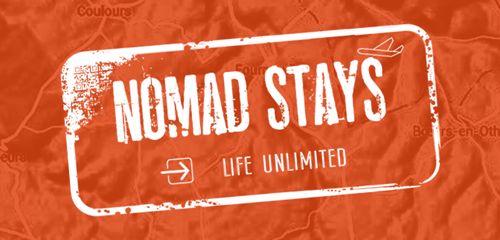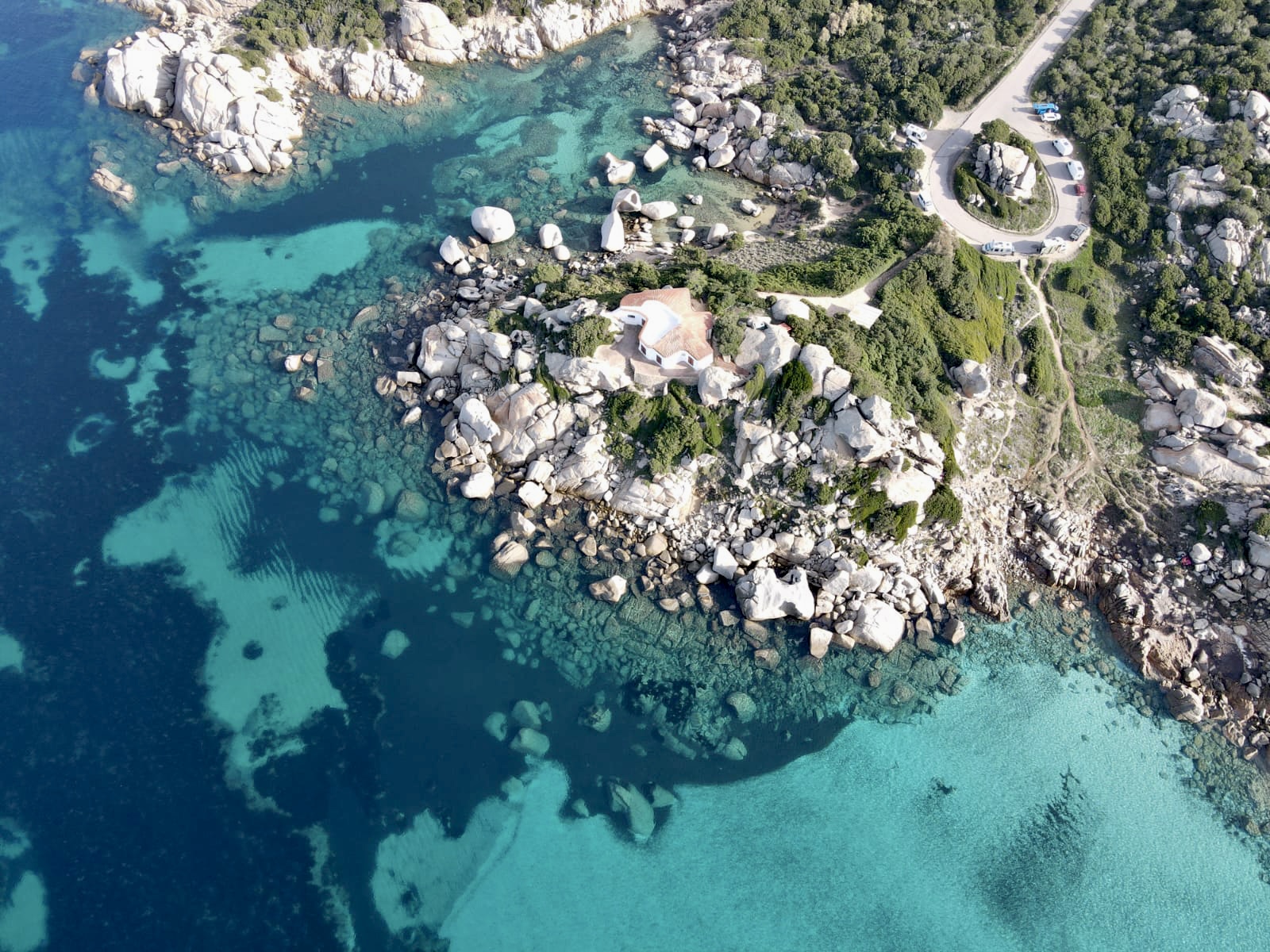Unveiling Sardinia’s Charms for the Digital Nomad Explorer
Just a flight or overnight ferry away from Italy lies the serene island of Sardinia, a paradise in the heart of the Mediterranean Sea, beckoning digital nomads with its tranquil pace and vibrant culture. Here’s why Sardinia is your next must-visit destination as we dive into it history and unveil an opportunity to reconnect.
Diving into Sardinia’s Rich Tapestry of History
Sardinia’s shores have been graced by countless civilizations, each leaving an indelible mark on its cultural landscape. From ancient ruins to age-old traditions, the island is a treasure trove of historical wonders waiting to be explored.
The history of Sardinian culture is as diverse and layered as the island’s rugged landscapes. From ancient civilizations to medieval kingdoms and beyond, Sardinia’s rich heritage is a testament to the resilience and ingenuity of its people.
The earliest traces of human habitation on Sardinia date back to the Neolithic period, around 6000 BCE. The island’s first inhabitants, known as the Nuragic civilization, left behind an impressive legacy of megalithic structures, including the iconic Nuraghe towers. These stone fortresses, some dating as far back as the Bronze Age, dot the Sardinian countryside, serving as a tangible reminder of the island’s ancient past.
The Nuragic civilization flourished for over a millennium, developing sophisticated metallurgical techniques, intricate pottery designs, and a complex social hierarchy. While much about the Nuragic people remains shrouded in mystery, their influence on Sardinian culture is undeniable, shaping everything from architecture and art to language and religion.
In the centuries that followed, Sardinia became a crossroads of civilizations, attracting Phoenician traders, Carthaginian conquerors, and Roman settlers. Each successive wave of invaders left its mark on the island, contributing to its cultural diversity and shaping its identity.
Under Roman rule, Sardinia prospered as a center of trade and commerce, its cities bustling with activity and its ports bustling with ships from across the Mediterranean. The Romans introduced new agricultural techniques, built roads and infrastructure, and established a network of towns and settlements that laid the foundation for modern-day Sardinia.
Following the fall of the Roman Empire, Sardinia fell under the sway of various European powers, including the Byzantines, Vandals, and Arabs. Each new conqueror brought with them their own customs, traditions, and beliefs, enriching the island’s cultural mosaic and leaving behind a legacy that is still visible today.
In the Middle Ages, Sardinia emerged as a battleground for competing kingdoms and empires, including the Byzantine Empire, the Kingdom of Aragon, and the Kingdom of Sardinia and Corsica. This tumultuous period saw the rise of fortified cities, such as Cagliari and Alghero, as well as the construction of majestic cathedrals and castles that still stand as monuments to Sardinia’s medieval heritage.
By the Renaissance, Sardinia had become a Spanish dominion, its fortunes tied to those of the Spanish Empire. The island experienced a period of cultural and artistic flourishing, with artists, poets, and scholars flocking to its shores in search of inspiration and patronage.
In the modern era, Sardinia has undergone significant social, economic, and political changes, yet its cultural legacy remains as vibrant as ever. From its ancient Nuragic ruins to its medieval castles and Renaissance palaces, Sardinia is a living testament to the enduring spirit of its people and the countless civilizations that have called it home. Today, Sardinian culture continues to evolve, blending tradition with innovation, and embracing its multicultural heritage as it looks towards the future.
This is just the begining of what you will discover for yourself on this island.
Embracing the Sardinian Lifestyle
While Sardinia shares borders with Italy, its culture stands uniquely apart. Delight in the distinct flavors of Sardinian cuisine, lose yourself in the rhythms of traditional music, and marvel at the island’s architectural diversity. Here, life unfolds at a leisurely island life pace, offering a perfect blend of tradition and modernity.
Experience FOOd, culture & a Coliving Community in Sardinia
Sardinia’s culinary scene is a testament to its rich heritage, with a focus on fresh, locally sourced ingredients. Indulge in traditional dishes like Malloreddus and Seadas, each bite a celebration of the island’s agricultural abundance.
Nestled within the breathtaking landscapes of Sardinia lies not just a haven for music and art enthusiasts, but also a paradise for food lovers, culture seekers, and those in search of meaningful connections. Joining a coliving community in Sardinia offers a unique opportunity to immerse oneself in the island’s rich tapestry of experiences, fostering deep connections with like-minded individuals while exploring the diverse facets of Sardinian life.
Sardinian cuisine is a culinary journey that reflects the island’s cultural heritage and natural bounty. From hearty pasta dishes infused with aromatic herbs to succulent seafood platters fresh from the Mediterranean, Sardinian cuisine is a celebration of flavor and tradition. Local specialties such as culurgiones (stuffed pasta), porceddu (suckling pig), and seadas (fried pastry filled with cheese and drizzled with honey) tantalize the taste buds and provide a glimpse into the island’s gastronomic legacy.
Joining a Coliving community in Sardinia offers more than just a place to stay; it provides a gateway to experiencing the island’s vibrant culture firsthand. From participating in traditional festivals and events to learning age-old crafts from local artisans, coliving residents have the opportunity to delve deep into Sardinia’s cultural tapestry, forging connections that transcend language and borders.
Moreover, Coliving fosters a sense of camaraderie and collaboration among residents, creating an environment where ideas are shared, creativity flourishes, and lifelong friendships are formed. Whether exploring the winding streets of historic villages, hiking along rugged coastal trails, or simply sharing a meal under the stars, Coliving in Sardinia cultivates a sense of belonging and community that enriches the overall experience.
Beyond the cultural and social aspects, joining a Coliving community in Sardinia offers practical benefits as well. Shared living spaces provide a cost-effective alternative to traditional accommodations, allowing residents to enjoy the comforts of home while minimizing expenses. Additionally, Coliving often includes amenities such as coworking spaces, high-speed internet, and communal areas for socializing and networking, making it an ideal choice for digital nomads and remote workers seeking a productive yet inspiring environment.
In summary, joining a Coliving community in Sardinia offers a holistic experience that encompasses the island’s rich culinary traditions, vibrant cultural heritage, and the opportunity to connect with like-minded individuals from around the world. Whether seeking inspiration, seeking adventure, or simply seeking a sense of community, Sardinia’s Coliving communities provide the perfect backdrop for a truly immersive and unforgettable experience.
Immersing Yourself in Sardinia’s Art & Music Scene
Nestled in the heart of the Mediterranean, Sardinia boasts a rich cultural tapestry woven from centuries of history, tradition, and artistic expression. At the core of this vibrant tapestry lies the island’s music and art scene, a dynamic fusion of ancient melodies, traditional craftsmanship, and contemporary innovation.
From ancient melodies echoing through Launeddas flutes to vibrant contemporary jazz festivals, Sardinia’s musical landscape is as diverse as it is captivating. Dive into the island’s artistic heritage as a whole, from ancient Nuragic artifacts to modern-day masterpieces.
Music has always been an integral part of Sardinian culture, rooted in ancient traditions that have endured for millennia. One of the most iconic instruments of Sardinian music is the Launeddas, a triple pipe reed instrument dating back to the ancient Nuragic civilization. With its haunting melodies and intricate rhythms, the Launeddas evoke a sense of timelessness, transporting listeners to a bygone era.
Throughout the island, traditional folk music continues to thrive, with local festivals and celebrations providing a platform for musicians to showcase their talents. From the lively rhythms of the tarantella to the soulful ballads of the cantu a tenore, Sardinian folk music reflects the island’s diverse cultural heritage and deep connection to the land.
In addition to its traditional music, Sardinia has also embraced contemporary genres, with jazz, blues, and rock taking center stage in the island’s music scene. Each year, Sardinia plays host to a variety of music festivals, attracting both local talent and international artists. From the internationally renowned Time in Jazz festival in Berchidda to the eclectic sounds of the Sant’Anna Arresi Jazz Festival, these events offer a platform for artists to push the boundaries of musical expression and connect with audiences from around the world.
But music is just one facet of Sardinia’s artistic landscape. The island’s rich history is reflected in its art and craftsmanship, from the intricate designs of Nuragic artifacts to the vibrant colors of modern-day paintings. Sardinia’s artistic heritage is celebrated in museums and galleries throughout the island, showcasing works that span centuries of creativity and innovation.
One of the most iconic symbols of Sardinia’s artistic heritage is its traditional handwoven textiles, known as “tessuti sardi.” Crafted using age-old techniques passed down through generations, these textiles feature intricate patterns and vibrant colors inspired by the island’s natural beauty. Today, Sardinian artisans continue to preserve this ancient craft, creating exquisite textiles that are prized for their beauty and craftsmanship.
In addition to textiles, Sardinia is also renowned for its ceramics, jewelry, and woodwork, each reflecting the unique cultural identity of the island. Whether browsing the bustling markets of Cagliari or exploring the quaint artisan workshops of small villages, visitors to Sardinia are sure to encounter a wealth of artistic treasures waiting to be discovered.
From ancient melodies echoing through Launeddas flutes to vibrant contemporary jazz festivals, Sardinia’s music and art scene offer a captivating journey through the island’s rich cultural heritage. Whether immersing oneself in the timeless rhythms of traditional folk music or exploring the innovative creations of modern-day artists, Sardinia is a place where creativity knows no bounds, inviting visitors to experience the magic of its artistic soul.
Embarking on a Workcation in Sardinia
As the world embraces remote work, Sardinia emerges as an ideal destination for digital nomads seeking inspiration and tranquility. Join us at AGAIA’s Re-Connect Retreat this May, where we’ll explore the perfect balance between work and play against the stunning backdrop of Sardinia’s natural beauty.
Experience the magic of Sardinia – where ancient history meets modern innovation, and every moment is an adventure waiting to unfold.
More about Traveling To Sardinia, Visas and Currency
Sardinia, Italy, does not have its own currency. It uses the Euro (€) as its official currency, just like the rest of Italy. Euros can be easily obtained from ATMs, currency exchange offices, and banks throughout Sardinia.
Sardinia, renowned for its stunning beaches, rugged landscapes, and rich cultural heritage, is a popular destination for digital nomads seeking inspiration and tranquility.
To get to Sardinia, you have several options:
1. Flying: The most common way to reach Sardinia is by flying. The island is served by three main airports: Cagliari-Elmas Airport (CAG) in the south, Olbia Costa Smeralda Airport (OLB) in the northeast, and Alghero-Fertilia Airport (AHO) in the northwest. These airports are well-connected to major Italian cities and other European destinations.
2. Ferry: If you prefer traveling by sea, you can take a ferry from mainland Italy. Major ferry ports on the Italian mainland include Genoa, Livorno, Civitavecchia, and Naples, with frequent sailings to various ports in Sardinia.
3. Cruises: Some cruise lines include stops in Sardinia as part of Mediterranean itineraries. This can be a convenient way to explore multiple destinations in the region.
Regarding visas, as of my last update, Italy is a member of the Schengen Area, which allows visitors from many countries to enter for short stays (up to 90 days within a 180-day period) without needing a visa for tourism or business purposes. However, visa requirements can vary depending on your nationality, the purpose of your visit, and the length of your stay.
As a digital nomad or remote worker, if you plan to stay longer than 90 days or engage in work activities while in Italy, you may need to apply for a visa or a residence permit. Italy offers various visa options for freelancers, entrepreneurs, and remote workers, such as the Elective Residence Visa or the Self-Employment Visa. It’s essential to check the specific visa requirements and regulations that apply to your situation before traveling to Italy.
To ensure a smooth and hassle-free travel experience, digital nomads planning to visit Sardinia or any other part of Italy should research visa requirements well in advance and prepare all necessary documentation accordingly. Additionally, it’s advisable to stay updated on any changes to visa policies and travel regulations, especially considering the dynamic nature of international travel regulations.
Meet the guest blogger & host of AGAIA’s Pop up Retreats

Meet Anja von Emden – I am a conscious Slow-mad with current home-base in Berlin & Tuscany. I have always been thriving for an wholistic, balanced lifestyle, whereas I love both: the inspiration and dynamics of cities and the tranquility I find in nature. With a business background in Consulting and Project Management, I am now moving into the Community and Social Entrepreneur space, hosting retreats in Italy, getting a coaching certification and following my new passion: ceramics. My entrepreneurial journey lead me to trust in the power of intentional community. My personal mission at the moment is to make an impact by bringing together digital with local communities in rural spaces. I am passionate about personal and professional development, creative unfolding and mindfulness.











Pingback: Sardinian Digital Archives: Accessing History Online - Ittiri
Linda
That’s interesting we invite you to write a blog about that topic just send it to marketingsupport@nomadstays.com please also send photos.